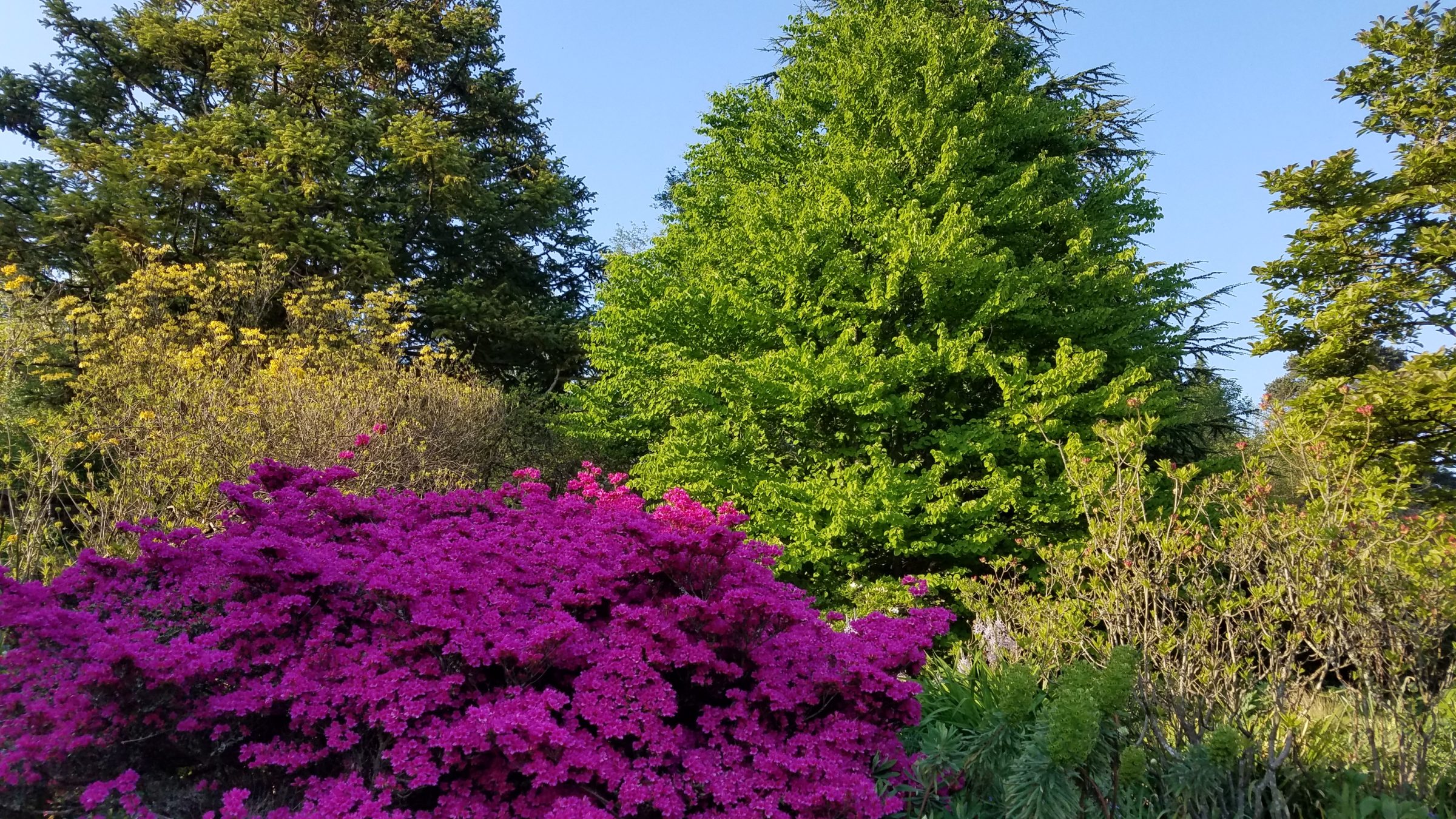
Cercidiphyllum japonicum
The elegant Katsura tree may lack significant flowers, but more than makes up for it with settle hints of beauty throughout the seasons with its graceful form, attractive fall interest, and unique seed pods in the winter. A dioecious tree, only the female tree will produce the seed pods. They will give way to striking spring growth that changes from bronze to vivid green all the while displaying small sprays of flowers originating in the leaf axils. This lime green foliage becomes the perfect backdrop for early dark flowering shrubs like azalea or rhododendron.
With a dense canopy and wide spreading habit, Cercidiphyllum japonicum makes an excellent shade tree. As the leaves senesce and the chlorophyll escapes plant cells the Katsura tree shines with hues of gold, orange, and red. Another party trick the versatile Katsura tree has up its sleeve is the fragrant aroma of the leaves that can be described as a sweet caramel or cotton candy.
If you’re thinking about planting this tree next to your patio so you can enjoy that aroma while sipping hot chocolate and eating pumpkin pie with the whipped cream on top, think twice. Cercidiphyllum japonicum can reach heights of 60 feet and spread just as far. To see how majestic these trees can become I encourage you to visit the Morris Arboretum in Philadelphia, Pennsylvania.
Cercidiphyllum japonicum
(ser-sih-dih-FILL-um juh-PAWN-ih-kum)
Katsura Tree
Origin:
cercidiphyllum – From the Greek kerkis, meaning redbud, and phyllon meaning leaf in reference to the resemblance to Cercis.
japonicum – Of Japan.
Family – Cercidiphyllaceae
Nativity – China, Japan
Hardiness –USDA Hardiness zones 4-8
Description:
Form – Attractive single or multi-trunked tree with a full-crown and oval canopy, densely branched
Foliage – Leaf shoots are dimorphic, produced on short and long shoots. Long shoots form the branching, produce smaller opposite paired leaves while the short shoots have single leaves on a 1.4-4.7 cm long petiole.
- Long shoot foliage – petiole 1.5–2 cm; leaf blade 3.2–4.5 × 1.9–3.2 cm, ovate, elliptic, or obovate, base rounded, truncate, or slightly cuneate, margin entire or finely serrate, apex acute
- Short shoot foliage – petiole 1.4–4.7 cm; leaf blade 3.7–9 × 5–8.3 cm, ovate to reniform, base cordate, margin crenate, apex rounded
Flowers – Dioecious / Insignificant
- Staminate – stamens ca. 9 mm; filaments filiform; anthers pink, 3–4 mm, narrowly oblong, longitudinally dehiscent, apex short apiculate
- Pistillate – carpel 1–1.5 cm; stigma red, decurrent, 2-ridged. Follicle brown to black, oblong, 10–18 × 2–3 mm, with a short persistent style
Fruit – Seed pods are winged, brown, congregate in follicles of 2 or 4 and resemble a dolphin by some accounts / each seed pod contains winged seeds
Culture:
Light – Full sun to part shade
Soil – Will not tolerate drought when young / Rich, moist, but well-drained soils / Can be grown in clay
Propagation – Easy from seed (ripen in August) or basal cuttings
Problems – Tolerate pests / No serious issues
Comments – The soft and finely grained wood is prized in furniture production. Avoid open sites where the tree is exposed to the elements. Katsura tree is not self-fertile.
Cultivars:
- C. japonicum ‘Heronswood Globe’
- C. japonicum f. pendulum
♥ Find yours at Blue Bell Nursery
References
Comments:
Sorry, the comment form is closed at this time.



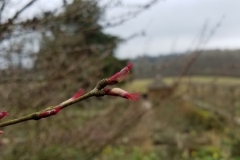
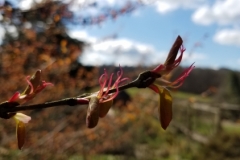

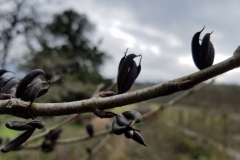
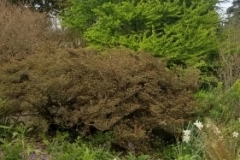
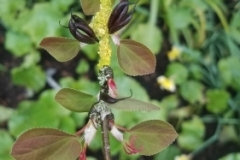
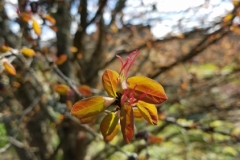
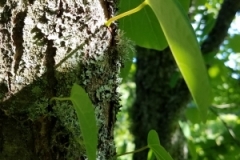
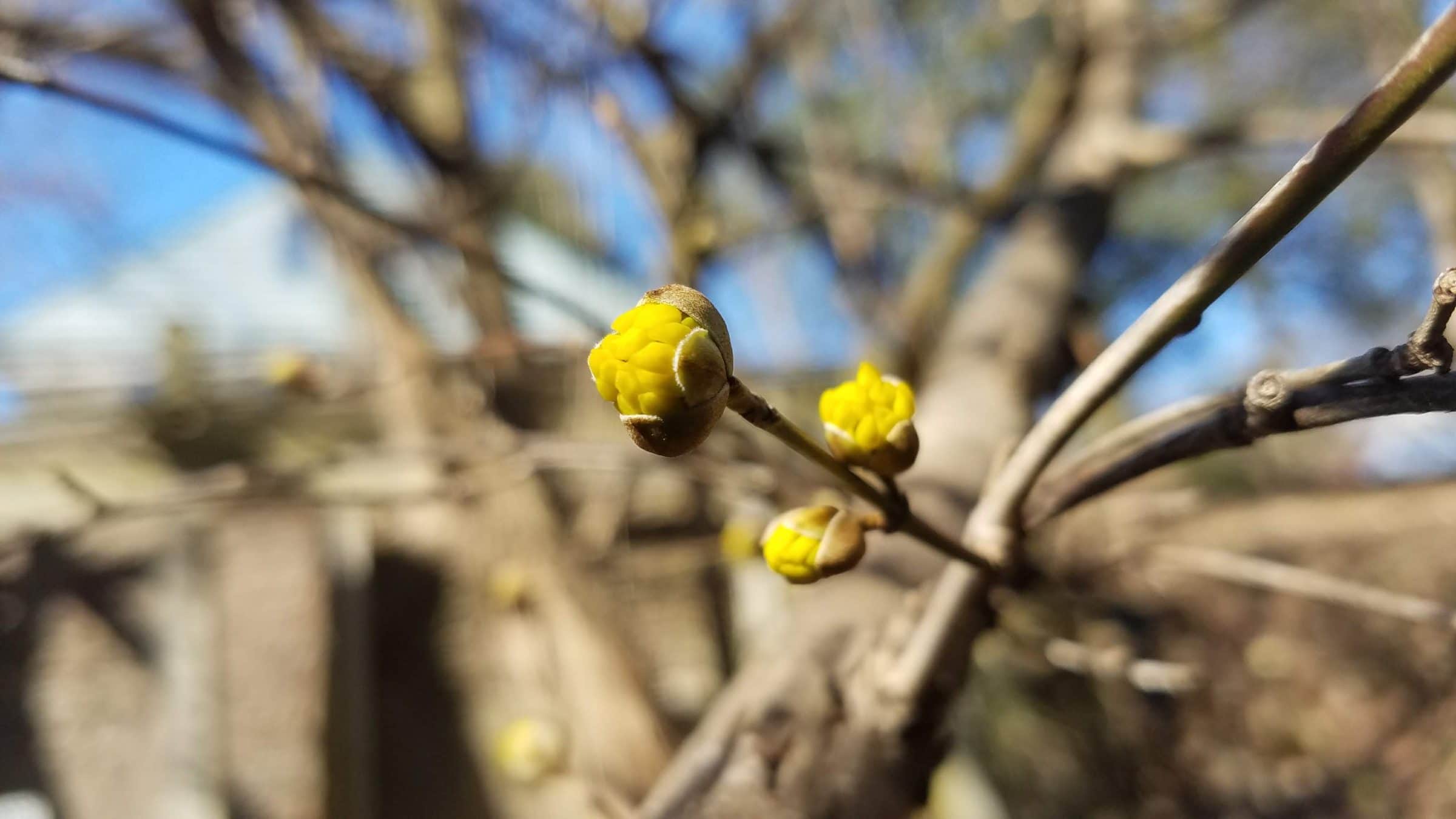
Irving
Thank you for the terrific post